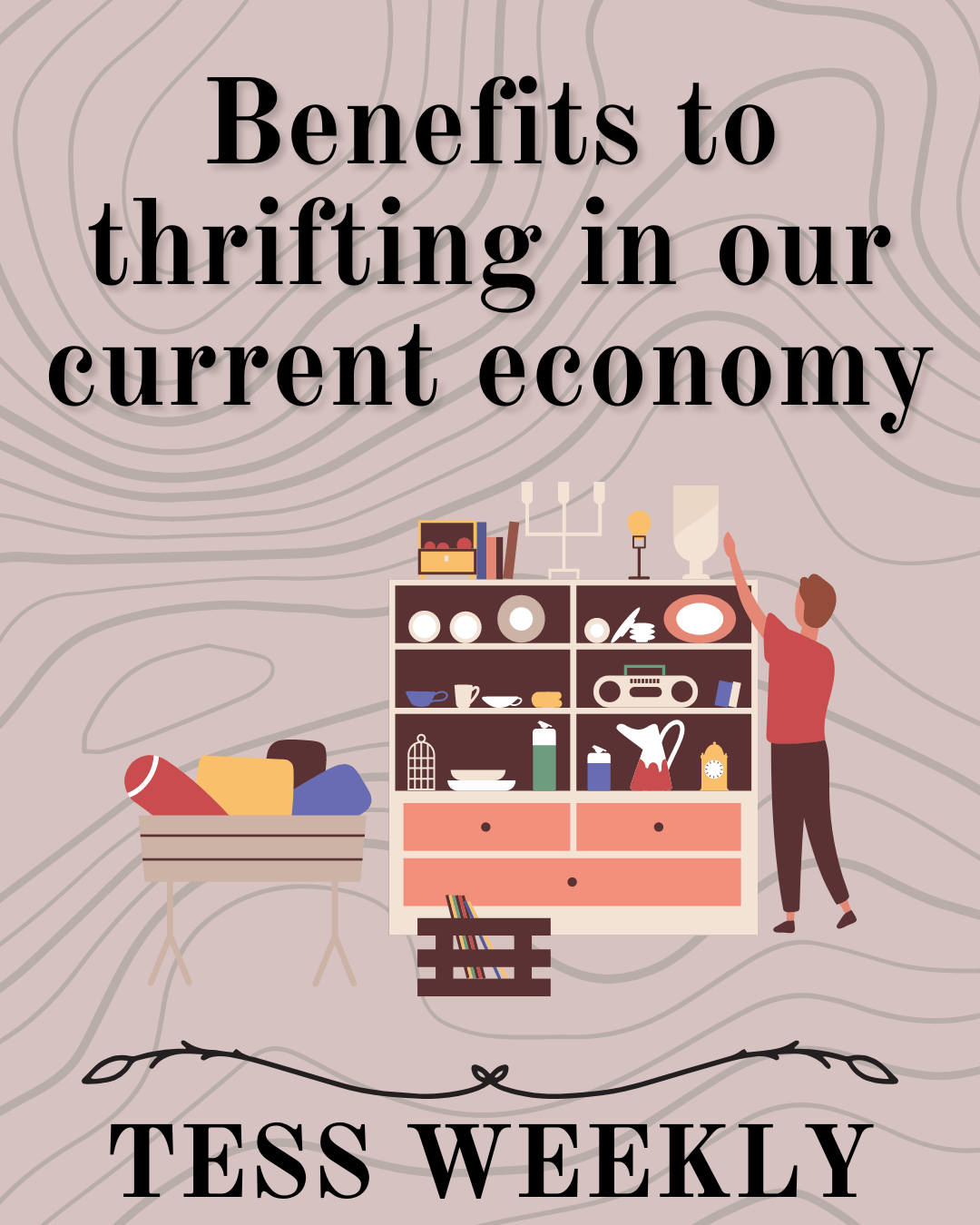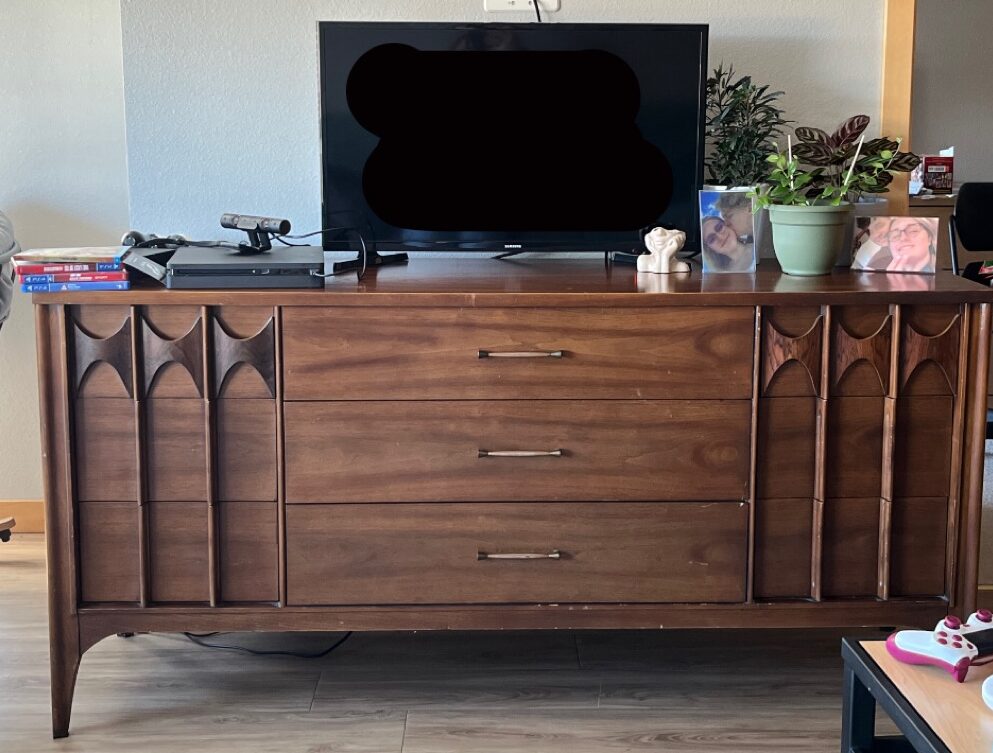Benefits of thrifting in our current economy
So… I live in the beautiful, expensive, & crumbling U.S.A. (aka United States, aka America). While there are many things I love about living in America such as… um…
Well there’s some things about it that aren’t so great either. Currently, America is experiencing the painstaking effects of what many believe is late stage capitalism.
Essentially, late stage capitalism is when the advantages of the system of capitalism no longer serve distinctly as advantages. For example, a large benefit of capitalism is supposed to be the average person’s ability to start their own business and succeed. But we are seeing small businesses get run into the ground by large corporations.
Or another benefit should be our choices – choices when it comes to food, airlines, insurance, you name it. But, in reality, the large majority of the market is typically owned by less than 10 companies for any given market. There is only an illusion of choice.
For example, according to Alana Semuels of TIME magazine, “Today, four airlines—American, Delta, United, and Southwest—control 80% of the market…”
But I digress. What I really want to chat about in this post is the benefits to thrifting in our current economy where 78% of Americans are living paycheck-to-paycheck.

Cost
The first and most obvious benefit to thrifting is the affordable costs. Unless you are shopping at a thrift store labelled as a “vintage” store, you’ll likely find clothes, cookware, books, etc. for under $10 a piece.
Sadly, some chain thrift stores such as Goodwill, Savers, and Value Village have been raising their prices for whatever reason.
Still, you’re more likely to find bargain items at your local thrift store than if you shop at your local department store so… go thrifting!
I’m currently in the process of moving and thrifting (and donating to thrift stores) has been a big help.
Fighting Consumerism
The second benefit to thrifting is fighting the ever-rampant consumerism and capitalism in the United States (and other places with similar systems such as Canada or the UK).
Instead of contributing to the toxic consumerist society we’ve built here in America, you can buy things second hand! That way you can still get things that are new to you but you don’t have to damage the environment or give money to big, greedy corporations.
A recent (January 2024) example of feral American consumerism that crosses my mind nearly every day is the “Galentine’s” Target x Stanley Cup collection. People went absolutely bonkers over those cups. They stood in lines for hours, trampled each other in the store, and argued over who should and shouldn’t get one. Scary.

Environment
As I mentioned above, thrifting is a great way to be more eco-friendly as an individual. Fast fashion is one of the biggest industries tied to a high carbon footprint and climate change.
According to Daphne Howland of Retail Dive:
“If every consumer this year bought just one secondhand garment instead of a new one, it would lower CO2 emissions by more than 2 billion pounds, equal to taking 76 million cars off the road for a day, and save some 23 billion gallons of water and 4 billion kilowatt-hours of energy, according to ThredUp’s report.”
If we all bought second hand, there would be a much lesser need for production and shipment which are two of the biggest contributors to climate change in the fashion industry especially (but also in other industries such as furniture, food, etc.).
Vintage Items
One thing that I find super cool about thrifting is the possibility to find authentic vintage pieces. Often times, you buy them for significantly cheaper than what they’re worth, too!
For example, I was thrifting with my partner a couple of weeks ago and I saw the most gorgeous MidCentury Modern 9-drawer dresser and I fell in love with it. It’s a little scuffed up, but it’s still absolutely beautiful.
Well, I decided it probably wasn’t worth what they were asking for it ($115) so I decided not to buy it and went home. Later that night I got curious and I image searched it on Google.
Low and behold, the dresser was an authentic Kent Coffey MidCentury Modern piece made from quality walnut wood. It’s also worth $3-4K…
So I had to go back and get it. And I did. Now it’s a statement piece in my living room.

Charity
Finally, a really nice thing about thifting is that most thrift stores donate a significant amount of money or run their own charity of sorts.
In my hometown, we have a thrift store that works in combination with a church and they use their profit to aid the houseless population, feed the hungry, and rehabilitate those struggling with addiction.
Like, what a wonderful (and impactful) way to serve the community around you – by shopping. By giving your money to an organization that will do good with it instead of stuffing it in the CEO’s pocket.